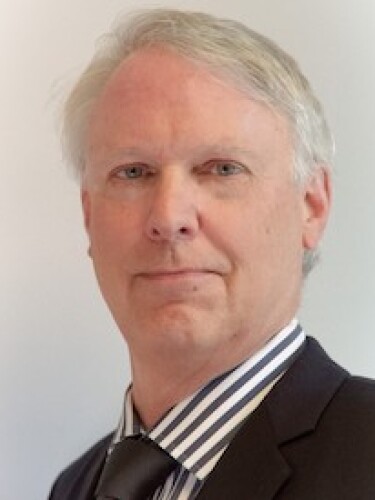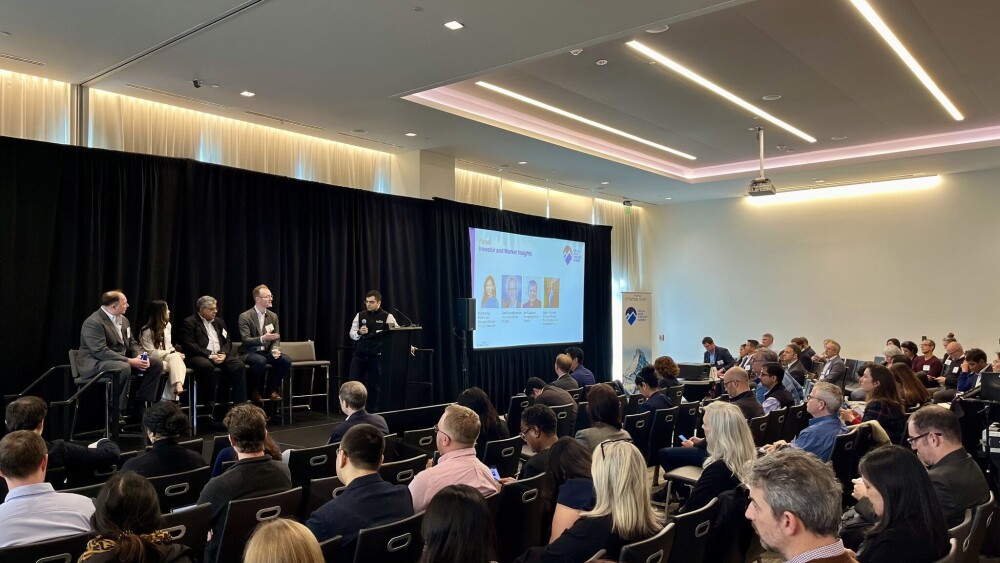The FDA recently approved the first cellular therapy for Type 1 diabetes and others may not be far behind. But experts say challenges still exist to the widespread application of these treatments.
Blue cells under a microscope/iStock, Anikbananik
Last month, the FDA approved CellTrans’ Lantidra as the first cellular therapy for Type 1 diabetes. The next day, Eli Lilly agreed to pay more than $300 million for Sigilon Therapeutics, with whom it is co-developing a cell therapy for the autoimmune illness. And these announcements came on the heels of new data presented by Vertex and Sernova for their respective cell therapies for T1D. Needless to say, this space is hot—but experts say challenges remain.
Type 1 diabetes (T1D) occurs when autoreactive T cells in the immune system attack insulin-secreting pancreatic islets. Cytotoxic T cells kill islets, leaving patients dependent on life-long insulin treatments. Cell therapy aims to introduce cells into the patient that can produce insulin.
Lantidra (donislecel)’s success is a testament to this approach. Of 30 patients in two non-randomized trials, 21 were insulin-free for at least a year, 10 of whom maintained this status for more than five years.
But the therapy didn’t work for everyone: Five patients did not achieve any insulin-free days. Denise Faustman, director of immunobiology at Massachusetts General Hospital and associate professor of medicine at Harvard Medical School, pointed to the underlying disease as the biggest barrier to the success of cell therapies for T1D.
“When you look at where transplants work and where transplants don’t work, if there’s an underlying disease that caused the failure of the cells or the organ, if you put the cells or the organ back in . . . the disease reoccurs.” With an islet transplant, “you’re putting [the islets] back into the den of lions that destroyed the original cells.”
Faustman said Lantidra’s approval was “surprising” because CellTrans did not conduct randomized, double-blinded trials.
“There’s no publication and there’s no randomized, double-blinded trials,” Faustman said. “You’re kind of waiting for that kind of data to know what to think.”
But with several other cell therapies for T1D in the pipeline, it’s clear that the biopharma industry is optimistic about the approach.
The Past and the Future: Overcoming Challenges
Cell therapy and islet transplantation are not new, Faustman said. In fact, researchers have been working on these approaches for more than 30 years.
The idea came from observations of patients who became insulin-independent after a whole pancreas transplant, Michael Lehmicke, vice president of science and industry affairs at the Alliance for Regenerative Medicine (ARM), told BioSpace. Today, there are approximately 19 cell and gene therapies in various stages of development for diabetes, Lehmicke said.
Vertex has gone all in, with two therapies in Phase I/II trials. At the American Diabetes Association (ADA)’s annual conference in June, the Boston-based biotech presented data from the ongoing trial of VX-880 showing that two patients achieved insulin independence after at least one year of treatment with the therapy. A second therapy, VX-264, received Investigational New Drug (IND) clearance in March.
One issue that Vertex and other developers of cell therapies have to contend with is the immune system. Immunosuppressive regimens are often used to prevent rejection of the cells. Both Lantidra and VX-880 involve such treatments.
In addition to potentially limiting the effectiveness of the treatments, Faustman noted that immunosuppressive drugs raise patients’ risk of infection. “If you’re a long-term diabetic, even after 40 years, you may die from the immunosuppression before you die from your original disease.”
VX-264 takes a different approach, encapsulating cells in a surgically implanted protective device—sometimes called a baggie—designed to shield them from the body’s immune system. While this approach avoids the need for immunosuppression, Faustman noted that it comes with its own challenges. For example, the encapsulation devices may fibrose, she said. Secondly, when islet cells are encapsulated, they cannot be put into the bloodstream. Not only does this raise the question of how long the islets will survive in this environment, but it could limit the cells’ ability to respond to blood glucose levels.
“The islet needs to sense glucose, glucose has to get into the baggie, then the islet has to secrete insulin and the insulin has to get back out into the bloodstream,” she said.
London, Ontario–based Sernova is taking a similar but slightly different approach. Also at ADA, Sernova presented data from the Phase I/II trial of its Cell Pouch System in patients with T1D and severe hypoglycemia unawareness, reporting that the first five patients to complete islet transplants achieved insulin independence for periods of 6 to 38 months.
The Cell Pouch “is not a typical encapsulation technology,” Philip Toleikis, president and CEO of Sernova, told BioSpace in an email. It’s a macro-device made of a series of channels that, when inserted deep under the skin, fill with highly vascularized tissue to form an organ-like environment, he explained.
“Over the course of a few weeks, the Cell Pouch naturally vascularizes with surrounding tissues to create an environment for the long-term survival and function of therapeutic cells,” he continued. Toleikis said it is this tissue integration that is key to preventing fibrosis of the device.
A third approach, in preclinical development at Vertex, involves genetically modifying embryonic stem cells so that they are less susceptible to rejection by the immune system. “But those haven’t been published and they’re a long way off,” Faustman said.
Yet another barrier to the widespread implementation of cell therapies for T1D is limited source materials, Lehmicke said. Lantidra relies on the pancreatic cells of deceased donors, which means an available pancreas is still required, he noted. To address this concern, some companies have turned to stem cells, which, depending on the source, could allow more patients to be treated “because the cell supply is less limited,” Lehmicke said.
Toleikis said that, in collaboration with partner Evotec, Sernova plans to begin clinical trials with its induced pluripotent stem cells (iPSC) islet-like clusters, which “unlike human-derived pancreatic islets, which are fragile and hardly scalable . . . can be collected from a blood sample.” Therefore, they can provide “an unlimited supply of islet clusters potentially for all people with diabetes.”
Heather McKenzie is a senior editor at BioSpace, focusing on neuroscience, oncology and gene therapy. You can reach her at heather.mckenzie@biospace.com. Follow her on LinkedIn and Twitter @chicat08.







